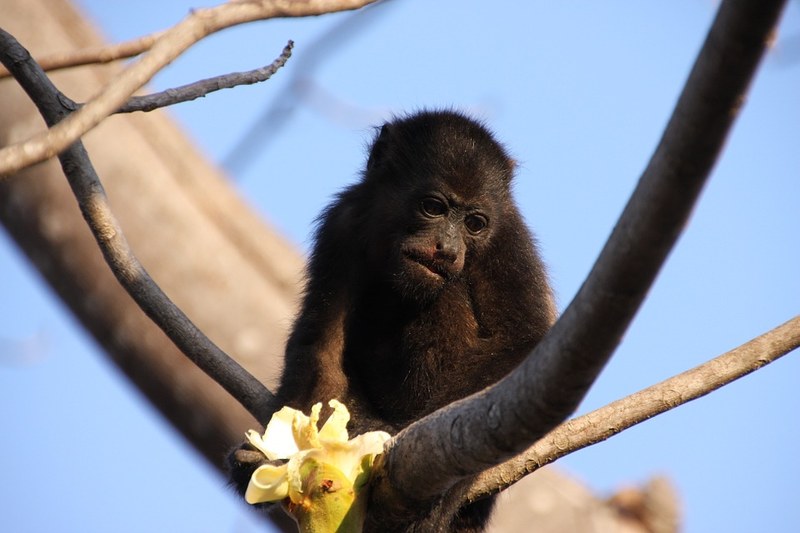
Wildlife Rescues in Costa Rica
The Jaguar Rescue Center Foundation and The Ara Project are gems along Costa Rica's Caribbean coast.
by Cheri Vogel, ABQ BioPark Education Curator
April 4, 2018 - In the very southeast corner of Costa Rica are two amazing wildlife rescues: The Jaguar Rescue Center Foundation and The Ara Project. Both of these nonprofits, located near Manzanillo along the rainforests of Costa Rica's Caribbean coast, focus on rescue, rehabilitation and release. I had an opportunity this January to visit both.
The Jaguar Project takes in approximately 600 animals each year. The reptiles, birds and mammals end up in rehab for a variety of reasons including dog attacks, car accidents, electrocution and trafficking. A good percentage of the baby sloths and monkeys are brought in as orphans, often by well-meaning tourists and locals.
During our facility tour the guide informed us that often, especially with the sloths, the mothers are not far off and babies are taken unnecessarily. There were also several monkeys that had been taken from homes and turned over by local authorities.
The main facility was well organized with a vet center, nursery area and various staging areas for the animals being rehabilitated. Some of the animals were kept blocked from view and away in order to avoid too much human contact, while others like the baby howler monkeys were being held by surrogate human volunteers. Some of the facility's residents had volunteer supervised free-range privileges. This included some non-releasable animals like a brown pelican with a broken wing, and some transitioning animals like juvenile sloths that were learning how to forage. Volunteers run tours throughout the main facility twice a day. This is one of their primary means of income.
They had a second facility for their releases deeper in the forest. This location was set up to allow animals the time to transition back to a normal life. It provided structures and food, but also open doors-when the animals are ready, they can choose to wander back into the forest.
The facility was founded in 2006 by a couple of dedicated biologists. It is run by a small staff and many volunteers. They take volunteers that are willing to commit four weeks to an exciting, life-changing experience. Local, inexpensive accommodations are available.
Just down the street is The Ara Project, which focuses on the great green macaw. The founders of this nonprofit receive rescued macaws confiscated by law enforcement or given up as unwanted pets. Many of the great green macaws were not releasable due to imprinting on humans. However, the animals are rehabilitated and given an opportunity to breed. Their descendants are helping to repopulate the area with this CITES Appendix 1 species.
The Ara Project is working with locals to reduce the illegal capture of this endangered species. Their awareness efforts are paying off too-our guide told us about a local resident who turned in her neighbor when she heard and recognized this very vocal bird.
Like the Jaguar Rescue Center, this group relies on tourism for donations. They invite the public during evening feeding times. They set up several feeders around a well-situated view point and you can watch these magnificent birds fly between feeders, squawking the whole time. The birds would stop in the fig tree 10 feet from the viewing platform just to see what was going on. All of these birds have the freedom to come and go as they please. We saw probably 15-20 birds while we were there. The guide mentioned that she has seen 30 at a time-that is pretty impressive because it is estimated that only around 290 are left in the Central Pacific Conservation Area.
The Ara Project also takes volunteers, and they are looking for a four-week commitment. They require payment for on-site accommodations.
This is an amazing area with tons of biodiversity, incredible beaches and fabulous mojitos.
